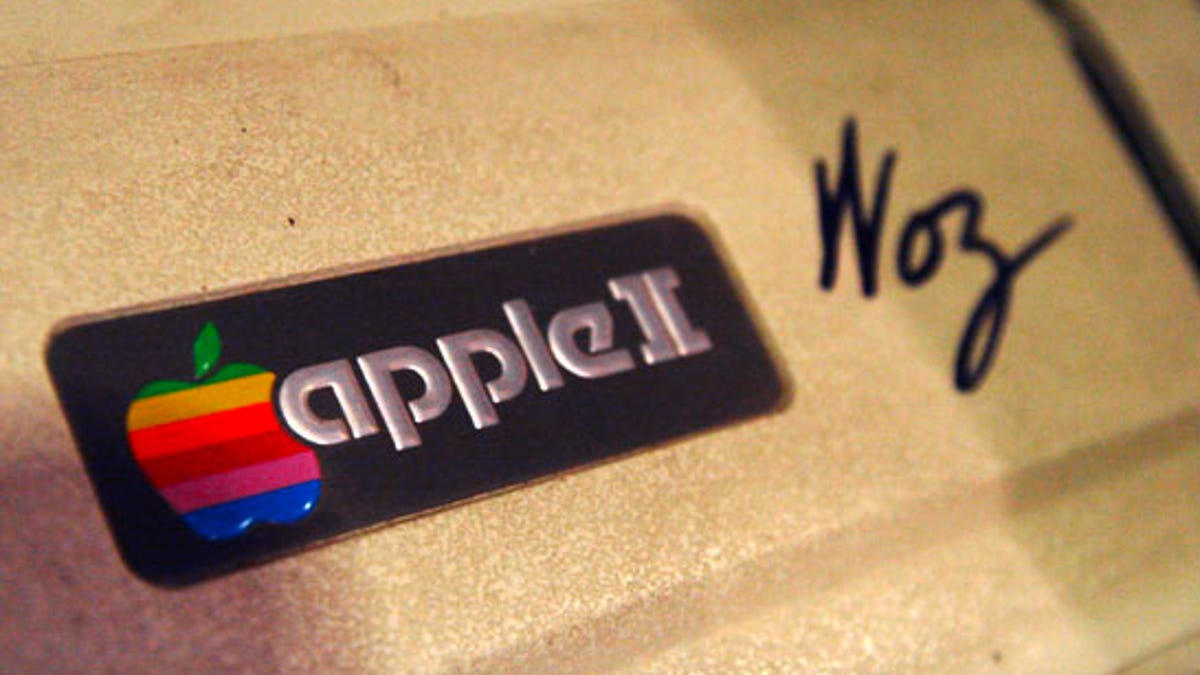Selling the Apple II: Three true stories
It's the 35th anniversary of the introduction of the Apple II. It reminds Rafe Needleman of a summer job selling the computers in San Francisco that didn't always pay so well.

The 35th anniversary of the Apple II introduction today takes me back. I sold Apple IIs in high school. It was the best summer job I ever had, even if I didn't, at first, make much money selling them.
When the Apple II first came to our store, Computer Connection, it really didn't move at all. The little putty-colored console wasn't especially powerful or capable. Our store was in the middle of San Francisco's financial district, and the businessmen who came in to look around were, for the most part, more interested in the Northstars and Cromemcos that ran CP/M.
There were three key events that changed things for me, though:
The spreadsheet
Dan Bricklin's spreadsheet, Visicalc, saved my job. It took next to no time to show financial guys how this little app could make their tedious number-crunching jobs easier and faster. Once Visicalc appeared on our shelves, the Apple II became a real business tool.
I talked to programmer Dan Bricklin this morning about Visicalc. He told me he conceived of the product in 1978, prototyped it that fall, and shipped it in October of 1979. Initially it only sold about 1,000 units a month, yet it was considered one of the key programs on the Apple II platform.
Bricklin reminds me that the whole program fit in "dozens of K, less than a GIF screenshot of it today." It had no help system since the Apple II didn't have enough memory. For the record, the original Apple II, at least in our business configuration, came with 48K of RAM that was used for programs, data, and the screen buffer. Programs and data were stored on 140K floppy disks; we sold most machines with two drives.
The musician
Business guys didn't like to overpay for hardware. While Visicalc made the Apple II a workable product for them, each sale took a lot of effort, and, usually, some serious dealing that cut into my commission. But one day a tall weirdo came into the store and started quizzing me on what the machine could do that wasn't business related.
It turned out to be the musician Todd Rundgren ("Hello It's Me;" "Bang the Drum All Day"). He was interested in experimenting with computer technology, he said. I quickly and easily sold him a loaded Apple II, a monitor, two disk drives, and a thermal printer. Then he spied what I think were the only Apple Graphics Tablets we had in stock, and added them in, too.
The tablet was a horrible piece of equipment. It was a large, flat, beige slate with wires embedded under the surface and a corded pen as a pointer. It used magnetic sensing to get position of the pen, and as I recall was very susceptible to interference. The cursor tended to jump around a lot.
But Rundgren eventually created a product using the tablet, the Utopia Graphics Tablet System, and he licensed it to Apple.
The flames
Speaking of flaky hardware, one day in 1980 or thereabouts some guys from Corvus Systems came in to show us a revolutionary storage product: a 10MB hard drive for the Apple II. We were eager to get this product to sell, for the obvious reasons: Not having to worry about floppy disks would make our customers more productive. Also, the thing was huge (larger than the Apple II itself) and expensive. We liked expensive.
We set up for the demo. An Apple II and a Corvus drive were connected by a flat ribbon cable over a parallel interface. The Apple II powered up. Then someone hit the switch on the Corvus. The thing spun up like a jet engine. It took perhaps 30 seconds. The pitch and volume rose, and we eagerly waited for the drive to come on line.
Then we heard a snap. Then a horrible rattle. Then a grating noise of metal scraping. Sparks flew out of the Corvus' vents, followed by actual flames and smoke. I ran into the back and flipped the circuit breakers as the thing slowly spun down.
We didn't take delivery of hard drives that day, but Corvus came back with a working version, and eventually it became a staple of our business sales.
Happy 35th, Apple II.
Got Apple II stories yourself? Share in the comments...

